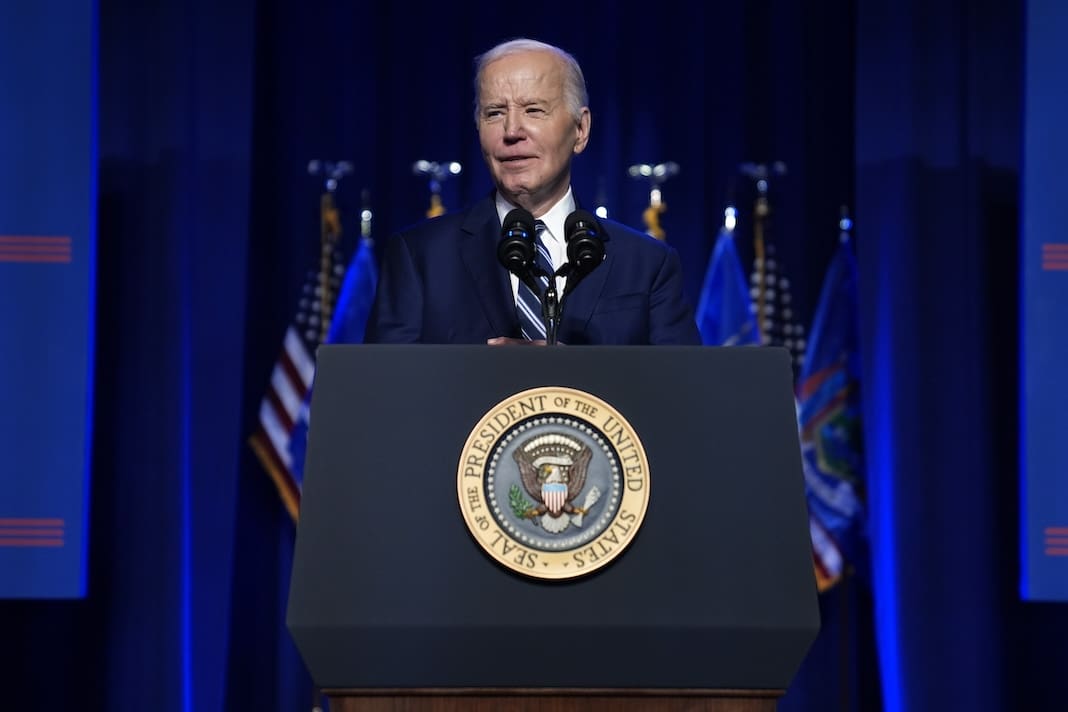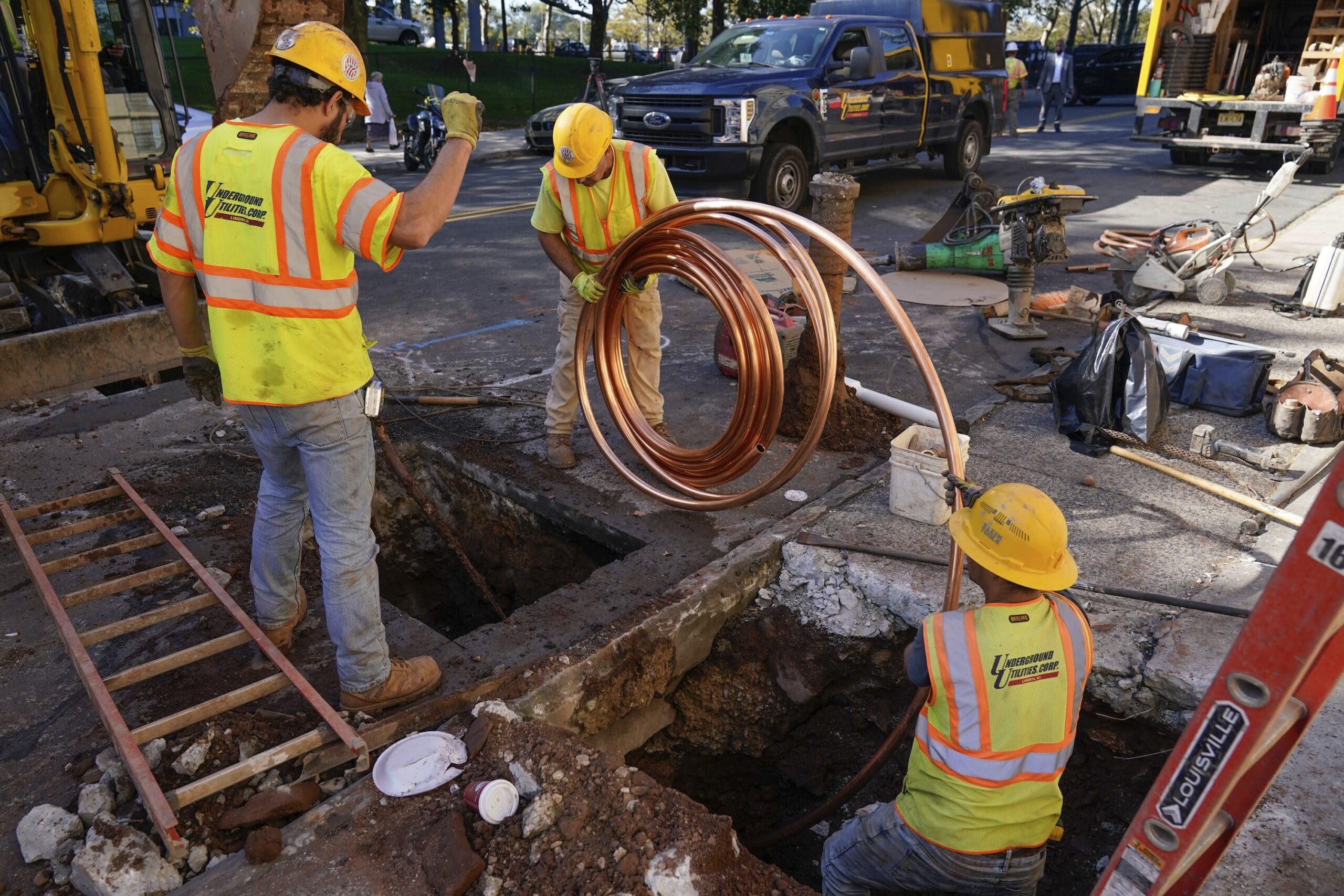Michigan school district reaps benefits of infrastructure law funding
The EPA’s Clean School Bus Program is paying for 40 new electric school buses for the Pontiac School District.

Funds from the Infrastructure Investment and Jobs Act that President Joe Biden signed in 2021 are allowing school districts all over the country to replace their aging diesel buses with all-electric bus fleets.
The U.S. Environmental Protection Agency’s Clean School Bus Program, funded by the bipartisan law, has awarded about $1.8 billion to school systems nationwide so far, according to EPA data. Of those funds, more than $52 million has gone to 25 school districts in Michigan alone.
The Pontiac School District is one of them. Pontiac received $9.8 million for 25 new electric school buses as part of the EPA’s 2022 rebate lottery program, plus $5.8 million in its 2023 grant program for another 15 new electric buses.
Those new buses will benefit the Pontiac community in a number of ways, and not just by lowering emissions, says Bill Holcomb, the district’s energy and technology innovation specialist. Holcomb, who oversees the district’s electric bus program, said Pontiac’s 40 new buses will have positive impact on finances, public health, and much more.
“We’re expecting about a 40% reduction in our costs, based on the diesel fuel that we’re having to buy,” Holcomb told the Michigan Independent. “A typical diesel bus has about 2,700 moving parts to it. An electric bus has roughly 300 moving parts to it. So just the maintenance on those vehicles, the expectation is that will be a lot less.”
Given that much of Pontiac’s current bus fleet is around 12 years old, Holcomb said that replacing them with a fleet of brand-new buses will also reduce the amount of maintenance that would have to be done on older buses. The school district plans to phase in the new electric buses over time, with the end goal being complete replacement of its diesel fleet, he said..
Battery range is often a concern for the average driver looking to purchase an electric vehicle. However, because of the length and timing of school bus trips, all-electric range is not a concern for Pontiac’s electric buses.
“They drop off in the morning, they come back after their drop-offs to the depot and they’ll recharge during the day when they’re not used, so it just increases that capacity of how far they can go,” Holcomb said. “There really is no range anxiety that people need to be worried about.”
He said Pontiac took the length of its bus routes into consideration when ordering the buses, and came to the conclusion that purchasing buses with 210-kilowatt batteries and 105 miles of range was more than sufficient. He acknowledged that that range might not work for every school district.
“For rural communities, it may be more challenging. So you may have a hybrid fleet of electric and diesel buses,” Holcomb said. “It doesn’t have to be all or nothing.”
There are some things the district needs to take care of before the buses are delivered this summer.
Pontiac is still working to get its electric charging infrastructure up and running. Currently, it has eight charging units at various locations throughout the district, Holcomb said. Those are used right now for a small fleet of electric Ford vans that transport athletes to games and move food within the district.
Local first responders also need to be trained on how to respond to emergency situations involving the electric buses. The manufacturer of the buses is set to provide training to Pontiac-area public safety agencies before the buses are delivered.
“These are high-voltage systems, so you can’t just crack open a bus using the jaws of life,” Holcomb said.
Once the district’s charging infrastructure is set up, the buses will ultimately be used not just for transportation, but also for “vehicle-to-grid” power storage.
“When the buses aren’t being used, if there’s a power outage, our local utility can say, OK, we would like to turn on your buses, and that stored energy capacity goes back into the utility’s grid, so they can power that local hospital or something like that,” Holcomb said. “Our plan is, when there’s a catastrophic event, to take a bus, put it in a neighborhood, because they have USB charging ports on the buses. So people can come on the bus, they can charge their cell phones; if they have a small medical device, like a little oxygen tank, they can come in and charge that on the bus.”
Just one fully charged bus, Holcomb said, could even power emergency systems in an elementary school for about three days.
Not only will zero-emission buses allow Pontiac students to breathe cleaner air, but the lack of noisy diesel engines will also benefit both students and the wider community.
“The buses run quieter than diesel buses. They don’t smell that diesel smell. The vision was to create an environment where the students get to school in a better position than on diesel buses,” Holcomb said. “So they’re more relaxed, the bus drivers aren’t yelling, not having to scream within the buses back and forth to be heard. It just creates a better environment.”




